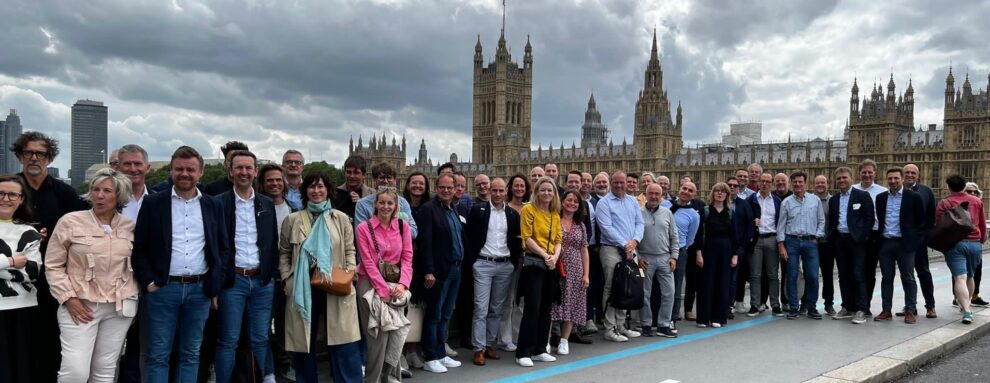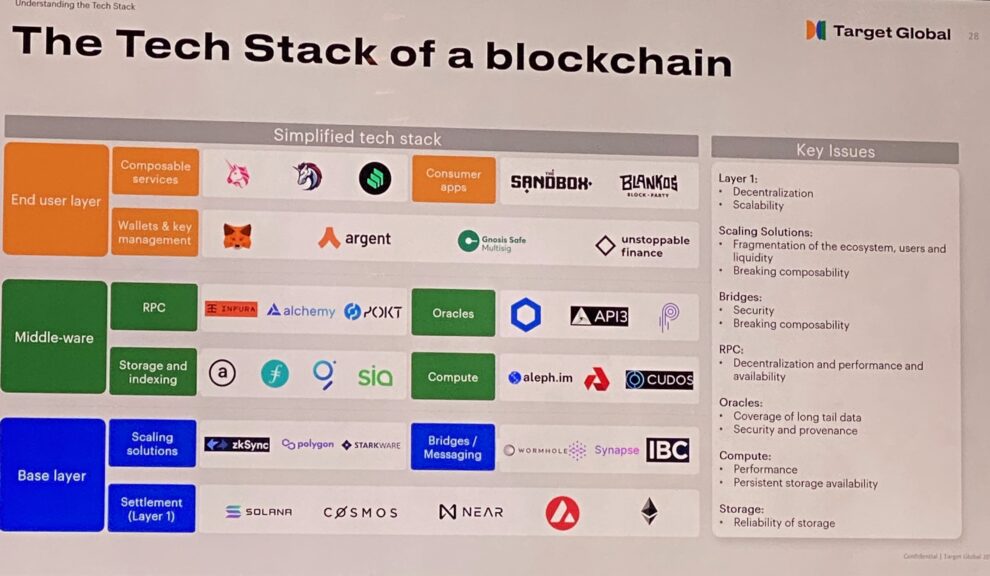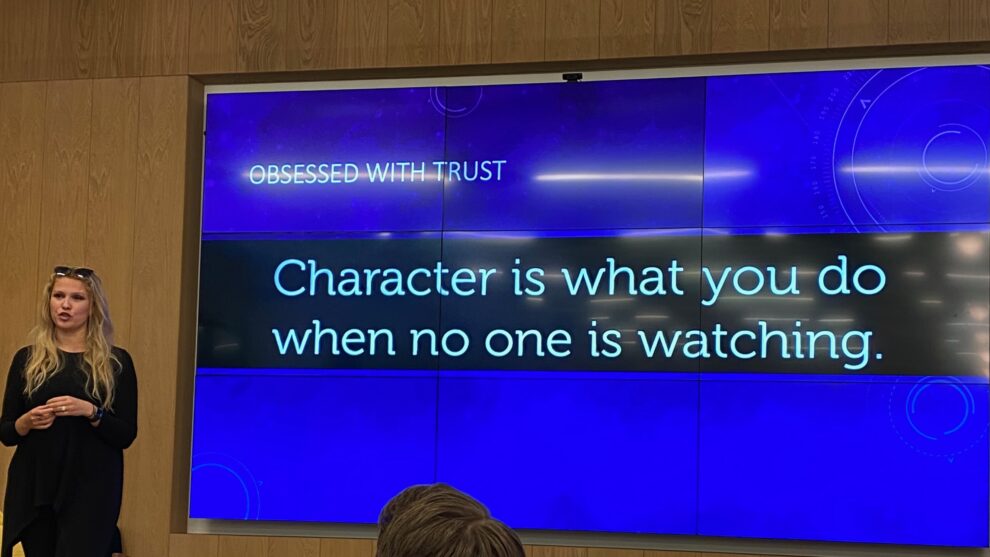Last week, Twipe CEO & Founder Danny Lein joined the @nexxworks Web3 Inspiration Tour in London. Here, he met with entrepreneurs and investors, to hear about the power of Web3. Along with the noise and hype, there are strong signals that we are at a turning point in the history of the internet. It is time to experiment, build and learn.
Back to 1999: Same rush, same stories, different time
In many ways it felt like 1999, the year in which I started my first venture. Between 1995 and 2000, Web1 was born. History refers to this period as the Internet bubble. There was an enormous belief that ‘something big’ was about to happen. Hundreds of initiatives were launched and reached the headlines. Over the past 2 days, we felt that same hunger and belief that Web3 will change the world fundamentally. Web3 evolutions are now becoming mainstream headline news.

In 1999, there was a huge influx of talent and an enormous amount of money spent looking for a quick homerun. The same flows are happening now in Web3. There is too much money hunting too few good business ideas. Many investors will be deceived. But the good news is that in a very short period of time, a large group of people are being trained in an entirely new field. This will result in great new businesses in the years to come.
In March 2000, the stock market value of the “dotcom” companies was at its all-time high. Most had great narratives, but no revenues. Most were gone after the subsequent dotcom crash which wiped 80% of the value – who remembers Pets.com? A long winter in dotcom land started. It gave birth to new companies like Facebook and Airbnb. The crash of cryptocurrencies on 13th May 2022 looks similar. It might be the start of a long crypto winter. and great news for this nascent industry. Capable entrepreneurs with solid ideas might get the time to breed and grow their businesses, with lower expectations. After all, some of today’s most successful dotcom businesses like LinkedIn (2002), Facebook (2004) and Airbnb were started after the burst.
Web3 is immature, but the core is solid
The large variety of initiatives, early successes and failures make it clear that Web3 is still in its early infancy. However, the core building blocks of Web3 seem to be solid and provide potential for a new Web. This is a web which is more decentralised and designed to distribute value amongst the different actors in a different way. The core elements of Web3 are blockchain technology, peer-to-peer payments, Non Fungible Tokens (NFTs) and Distributed Autonomous Organisations (DAOs).
Blockchain technology, although not yet perfect, is undoubtedly a key enabler of new decentralised information systems and data exchange. The technology is not yet ready to scale and is expensive to operate, but it is good enough to experiment with. The technology is probably as good as our first website, hosted on self-installed webservers, in our own datacentres back in 1999. Better versions are constantly being launched, such as Hedera or Bitcoin SV, who allow to operate the underlying technology at scale. Blockchain is here to stay.

Peer-to-peer payments, enabled by blockchains, are more efficient than our current system of value transfer. They rely on a system of distributed trust and allow one to eliminate expensive middleman. They will reduce processing costs and enable new interactions such as pay-as-you-use video streaming. With more standardisation, regulation/certification and improved interoperability, cryptocurrencies have a bright future. To sustain trust, stable governance and transparency will be needed.
NFTs are a hype and a reality. They provide a means to assign ownership of digital assets, or of digital twins of physical assets. They do not disappear, and do not require expensive intermediaries to certify ownership. Transfers can be easily and cheaply executed. Recent exuberant valuations of the sale of NFTs, such as the first tweet of Jack Dorsey or one of the Boring Apes, are illustrations of this new world attracting the wrong, greedy individuals. By no means do they undermine the value of proven storage of digital data on a public ledger.

Whether DAOs will survive the test of time is a big debate. DAOs envision a collective organisation owned and managed by its members, all of whom are able to have a voice. Most of the speakers affirm that this type of organisation is coming to prominence, even potentially replacing some traditional companies or governance bodies. This is especially the case where decision making is straightforward and does not require progressive insight through exchange of opinions.
Most importantly, the question remains whether these distributed systems, and the complex code underlying them, will be able to build trust at scale. As Irra from Zamna pointed out “Character is what you do when no one is watching.” She referred back to the DAO Hack in 2016 on the Ethereum blockchain, where a thief stole 50 million USD from a DAO controlled investment fund. This hack resulted in Ethereum being split into 2 forks, based on a decision of the inner circle of Vitalik Buterin.

The Metaverse will accelerate the adoption of Web3 core elements
The Metaverse is frequently associated with Web3, but this might limit its scope. Simply speaking, the Metaverse refers to a new evolution of the Internet where most interactions happen through 3D immersive experiences. Ownership and trade of digital assets in a virtual world is one of the key elements of the Metaverse. The creation of new virtual worlds is being accelerated by new devices, better 3D modelling tools and much improved connectivity. They allow to create high quality immersive experiences at lower costs.

The best-known Virtual Worlds are Roblox and Minecraft, which are already highly popular amongst GenZ. Virtual worlds will introduce their own mechanisms for value storage with NFTs, peer-to-peer payments and will enable new forms of engagement and entertainment. Multiple new virtual worlds are being created. Not surprisingly Pornverse, the first adult-content ecosystem was launched in February, and might be propelling this industry the same way adult content has been an invisible engine in Web1. A few days ago the Petaverse was launched, an NFT and Pet Metaverse which allows users to create and own their own unique digital pet.
Many solutions but what is the problem?
“Blockchain offers many solutions, but does it solve real life problems?”, asked Irra Ariella Khi, founder of Zamna (zamna.com). Indeed, we have seen highly advanced technology, sometimes difficult to understand. We have also heard how such technologies can generate distributed trust and provide new ways to distribute value. And yes, there are signs that this technology will be scalable.
Unfortunately, we have seen many use cases and applications. Zamna is a great initiative in the airline industry, where fragmented and sensitive information such as identity, passport and vaccination pass are requested time and time again. Zamna aims to solve this problem by storing some of the information on the blockchain. We have seen Cosmosx.io, a new virtual world in which NFTs and commerce will play an essential role.
Beyond peer-to-peer payments, more strong and compelling large scale use cases will be needed. With all the talent now in this industry, and the unsolved problems or inefficient information flows around, I am convinced that in the next 3-5 years the winners of the future will emerge. Web3 is hype and reality. It is important to start the exploration now. We must learn by doing to be part of this bright future.



